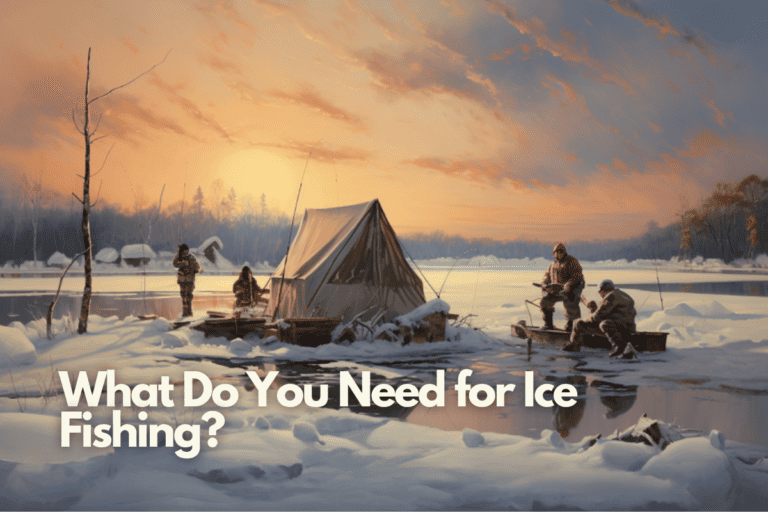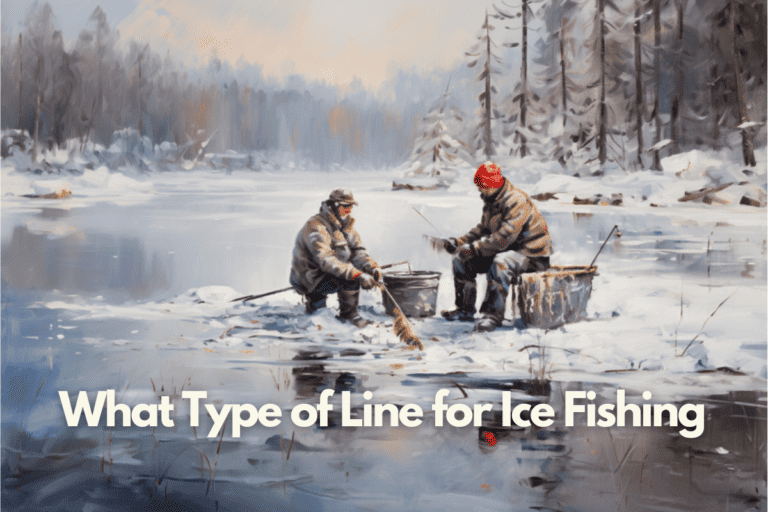How Much Ice is Needed for Ice Fishing: Safety First!

Ice fishing is a thrilling winter activity, but safety should always be the top priority. One of the most critical safety aspects of ice fishing season is understanding the required ice thickness to support various activities, from walking to driving a vehicle.
How Much Ice is Needed for Ice Fishing
The thickness of the ice is a crucial determinant of its strength and ability to support weight.
| Ice Thickness | Supported Activity |
|---|---|
| < 3 inches | Unsafe, stay off |
| 4 inches | Ice fishing, walking |
| 5-7 inches | Snowmobile, small ATV |
| 8+ inches | Cars, small pickup trucks (with extreme caution) |
However, several factors can influence ice thickness, including snow cover, temperature fluctuations, underwater springs, and water currents.
“Thick and blue, tried and true. Thin and crispy, way too risky.”
Maine Department of Inland Fisheries and Wildlife
This means that ice thickness can vary even within a single water body.
Factors Affecting Ice Thickness:
- Snow Cover: Snow acts as an insulator, slowing down the freezing process. A thick layer of snow can mean thinner ice beneath.
- Temperature Changes: Consistent cold temperatures lead to thicker ice, while fluctuations can weaken the ice.
- Underwater Springs: Areas with underwater springs may have thinner ice due to the warmer water.
- Water Current: Moving water takes longer to freeze, so areas with currents may have thinner ice.
Ice Thickness Guidelines:
- Less than 3 inches: Stay off! It’s unsafe for any activity.
- 4 inches: Suitable for ice fishing and other activities on foot.
- 5-7 inches: Can support a snowmobile or a small ATV.
- 8 inches and above: Can support larger vehicles like cars or small pickup trucks. However, always exercise extreme caution when bringing vehicles onto the ice.
Tips for Checking Ice Thickness:
- Local Resources: Before heading out, consult local resources like tackle shops, ice fishing lodges, or state agencies to get updates on current ice conditions.
- Tools: Equip yourself with tools like ice picks, a spud bar, chisel, or ice auger to test the ice thickness. A ruler or tape measure can help in getting accurate measurements.
- Safety Gear: Always carry safety gear like a life jacket, safety rope, cell phone, and ice picks. It’s also advisable to wear appropriate ice fishing clothing for cold weather conditions.
Final Thoughts

While ice fishing can be an exciting adventure, it’s essential to prioritize safety. Always be cautious, and if in doubt about the ice thickness, it’s better to stay off the ice. Remember, no fish is worth risking your life.
Stay informed, stay equipped, and most importantly, stay safe while enjoying the serene beauty of ice fishing.
FAQ
Q: How can I ensure the ice is safe for fishing? A: Always check the ice thickness before venturing out. Use tools like an ice auger to drill a hole and measure the ice’s depth. Consult local resources for updates on ice conditions.
Q: Can I drive my vehicle on the ice? A: While ice that’s 8 inches or thicker can technically support a vehicle, it’s crucial to exercise extreme caution. Avoid driving in groups, park vehicles at least 50 feet apart, and move every couple of hours.
Q: What should I do if I see cracks in the ice? A: Avoid areas with visible cracks, snow, or slush on the ice. These can be indicators of weak or thin ice.





